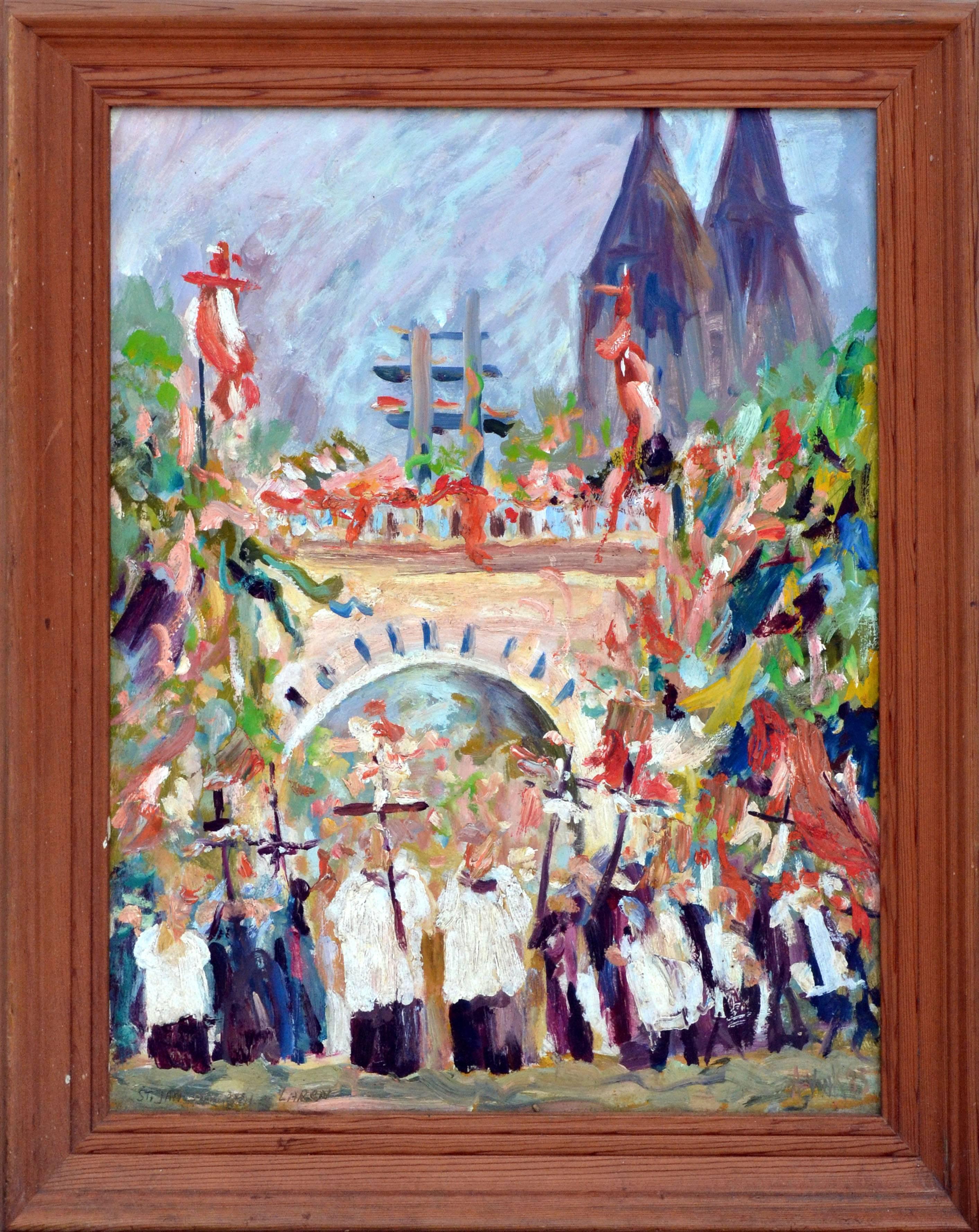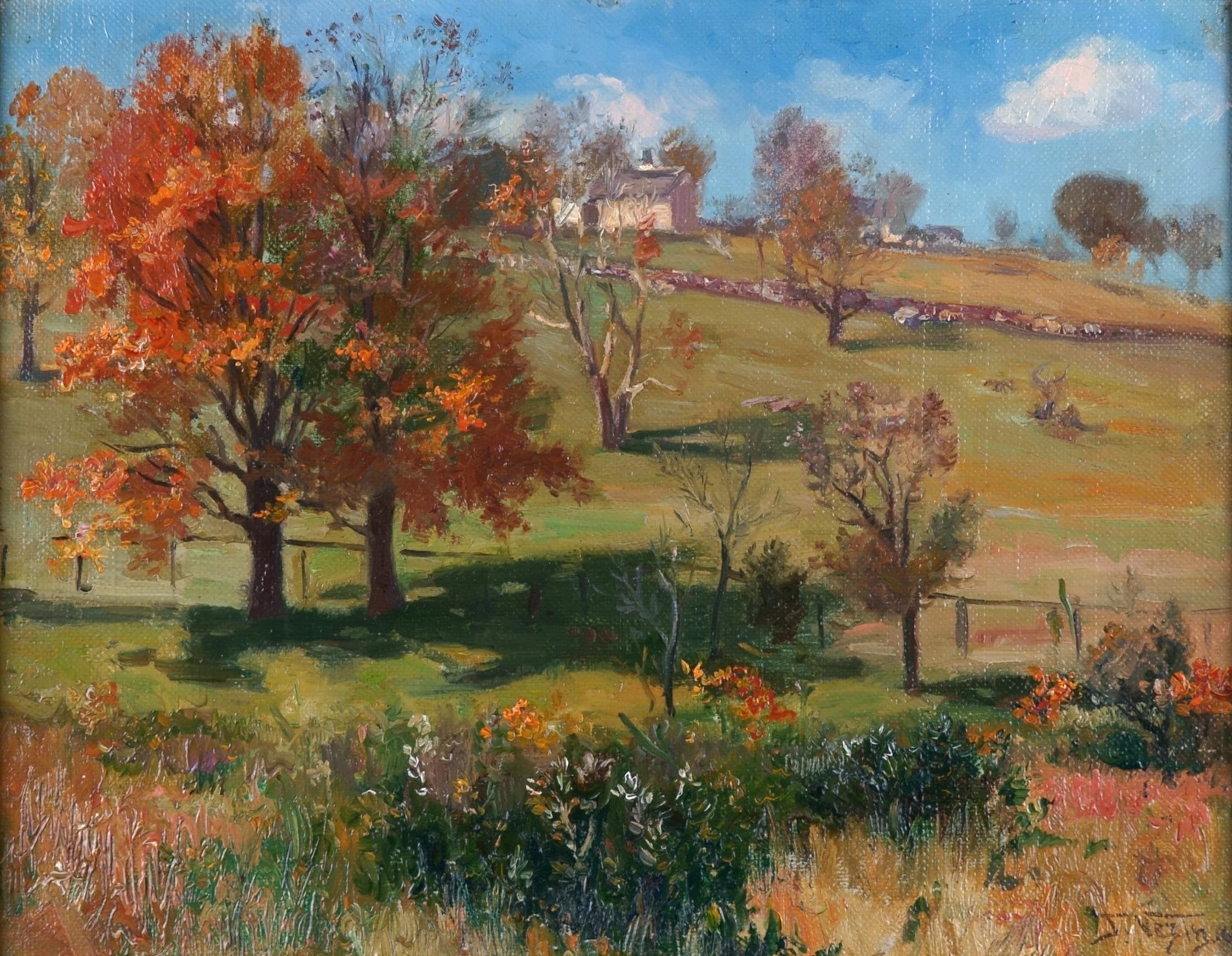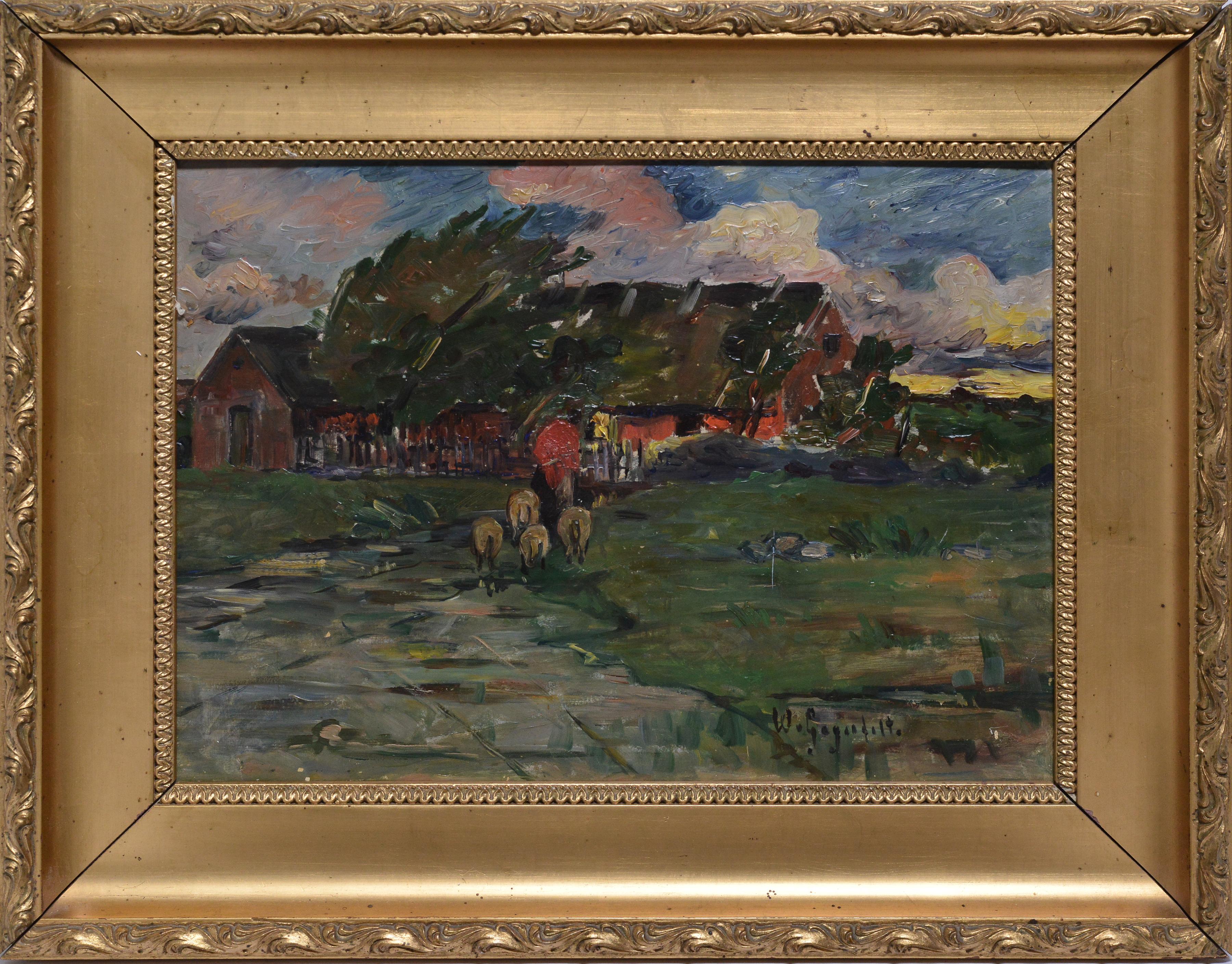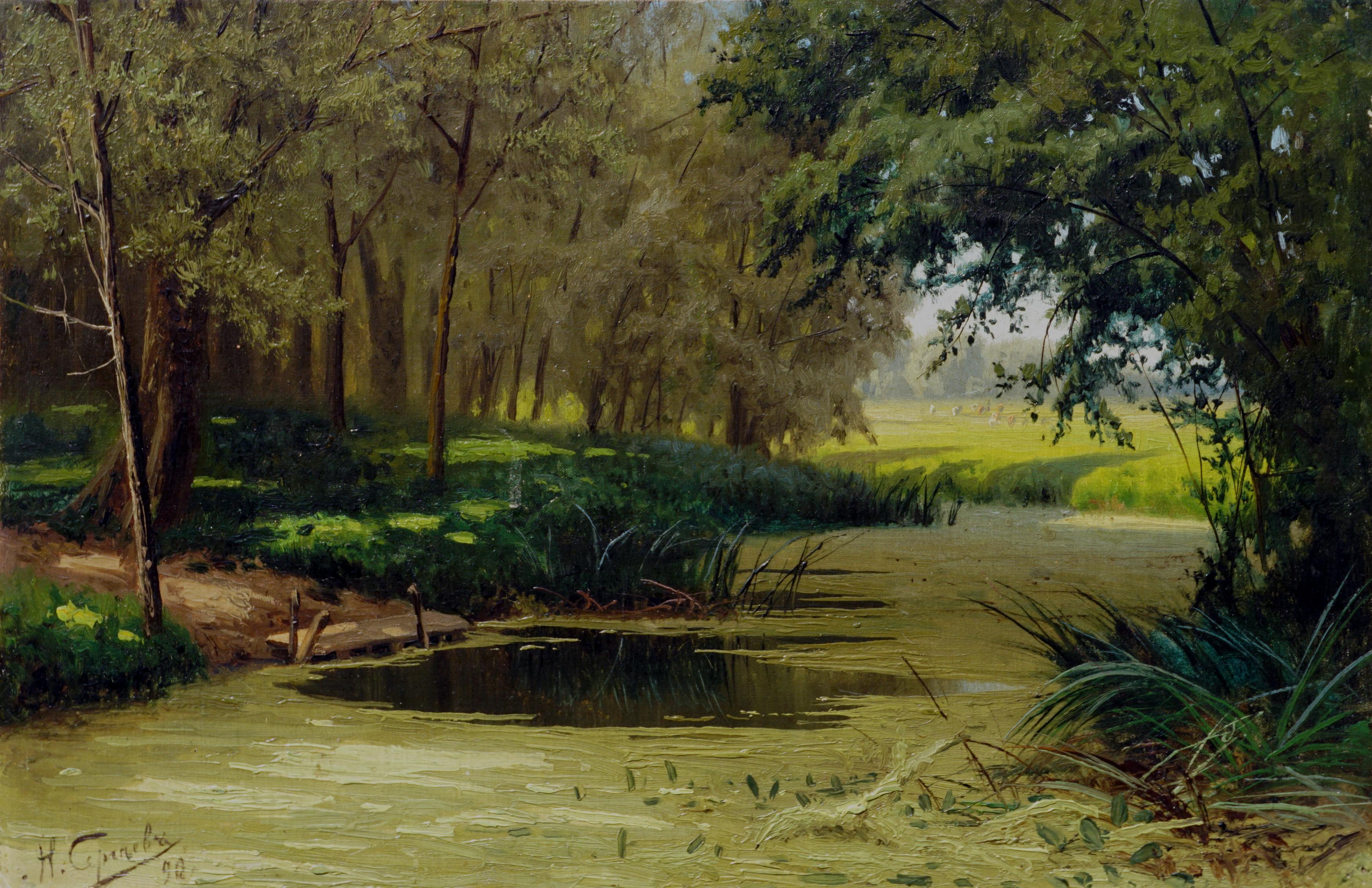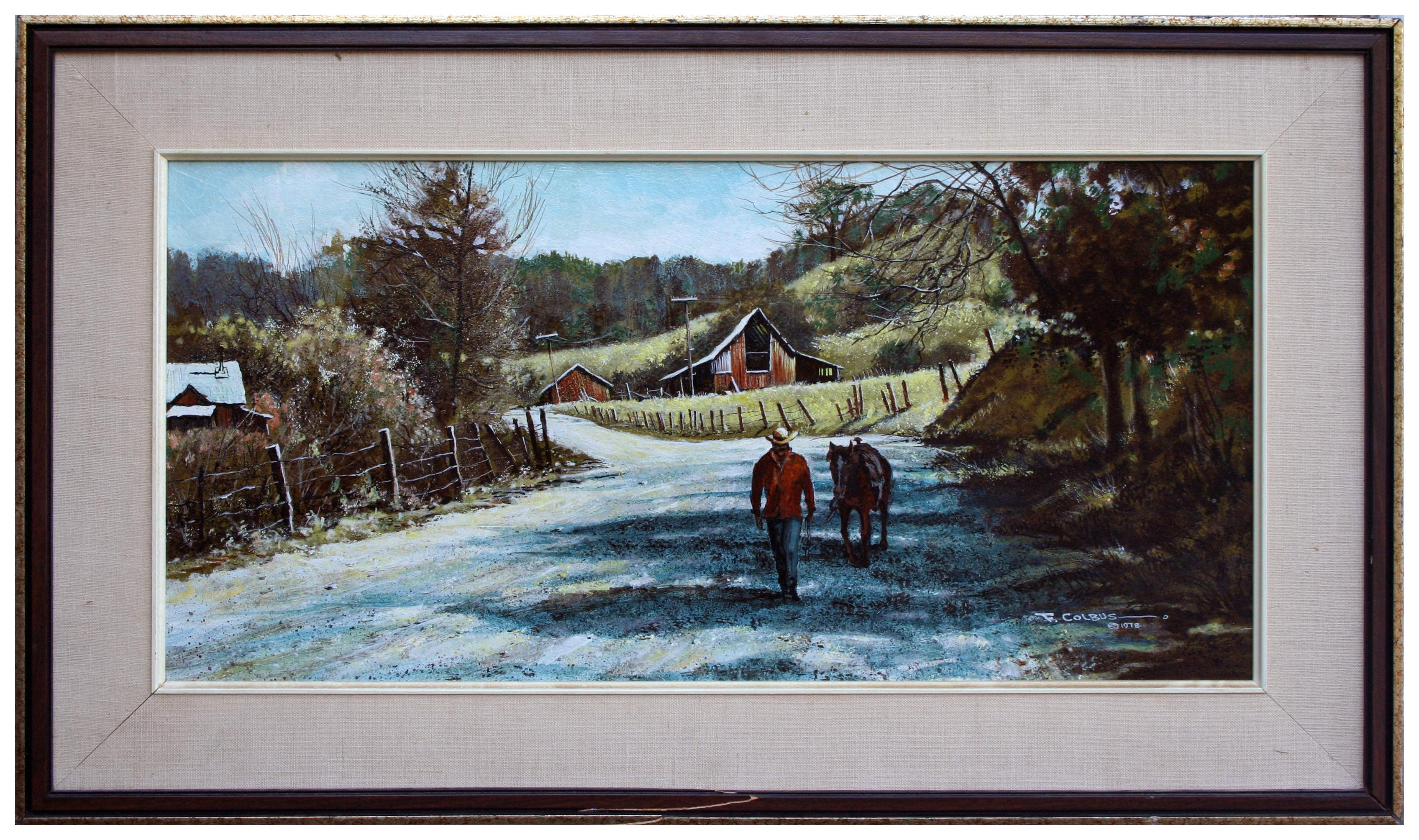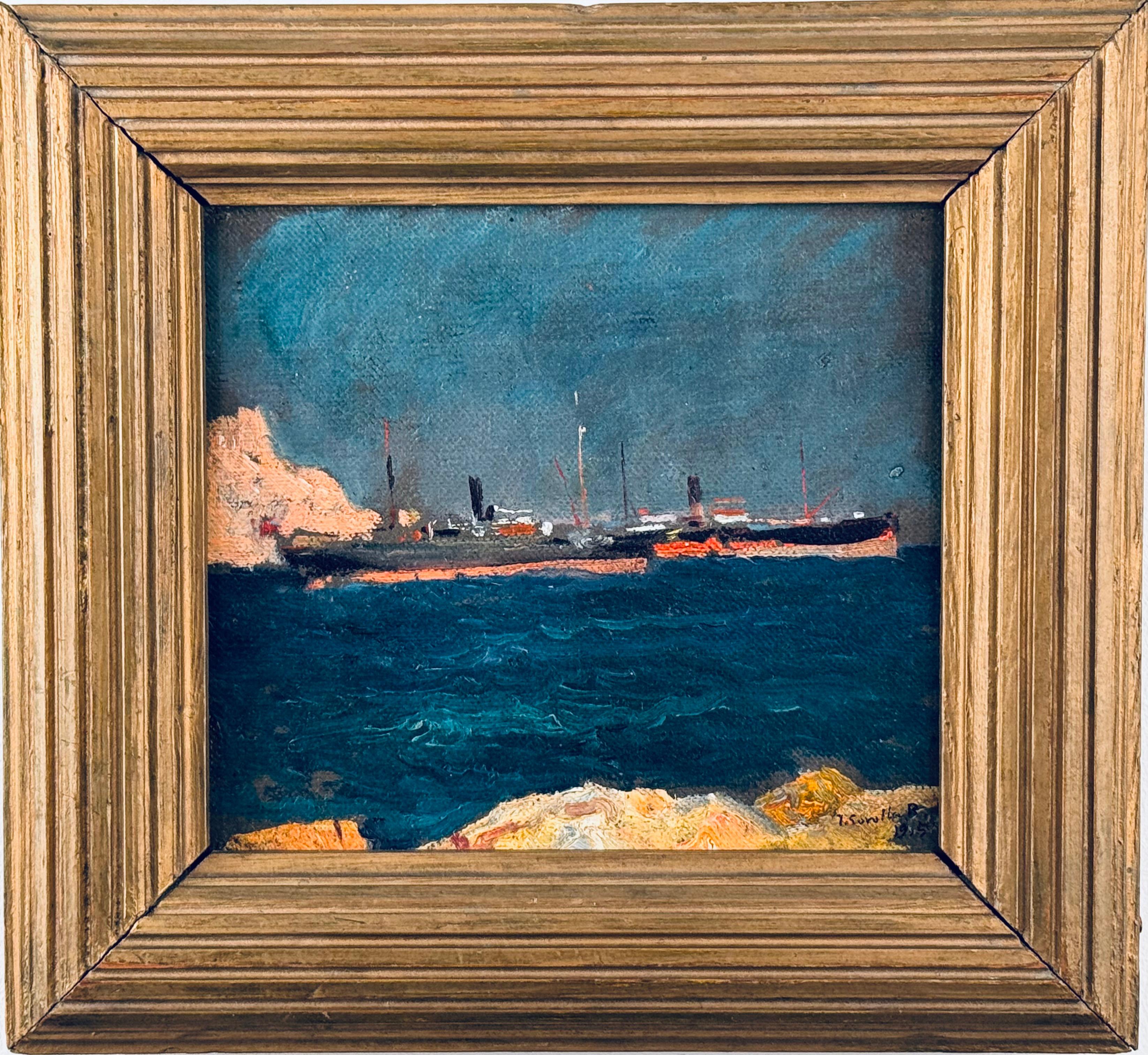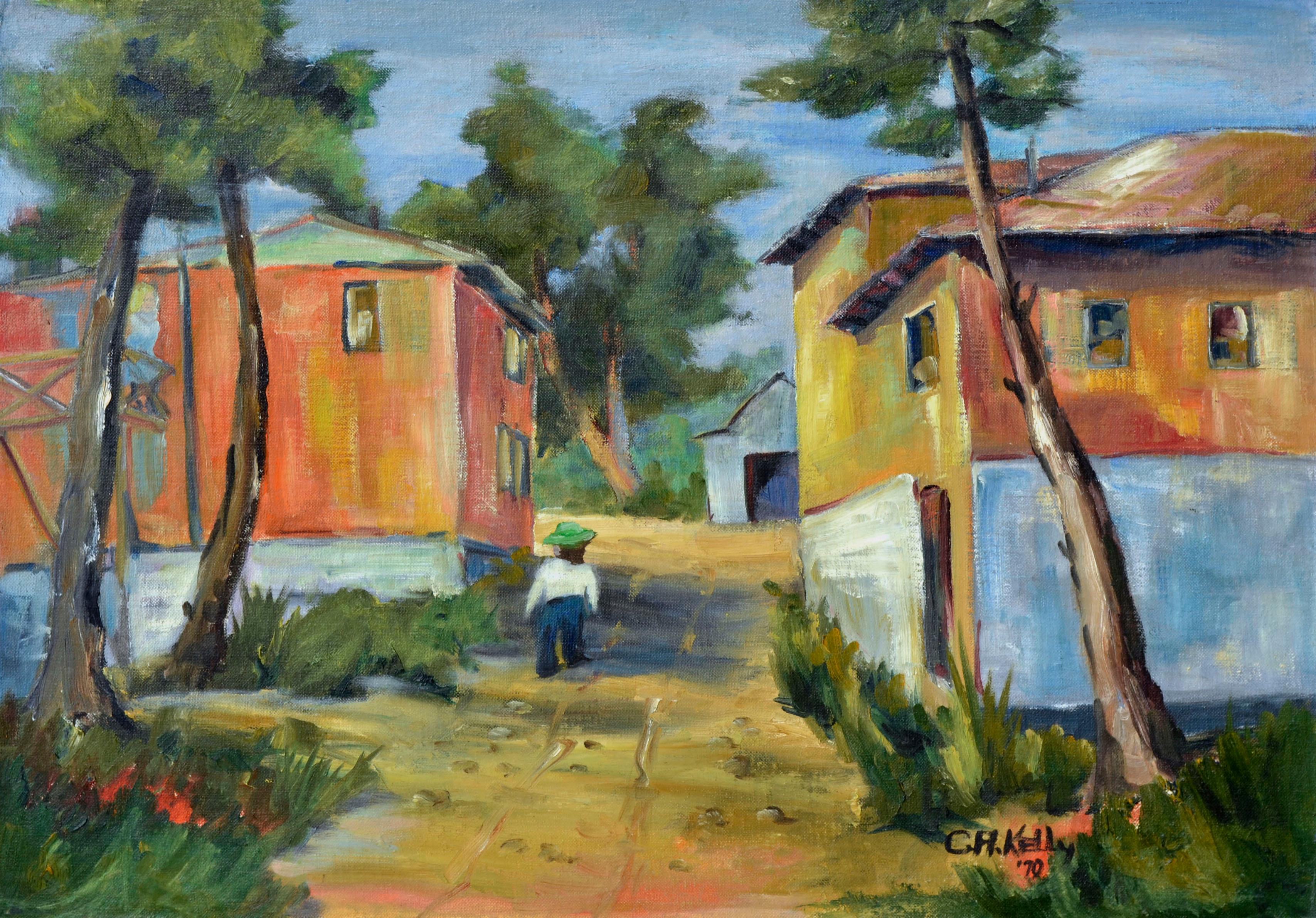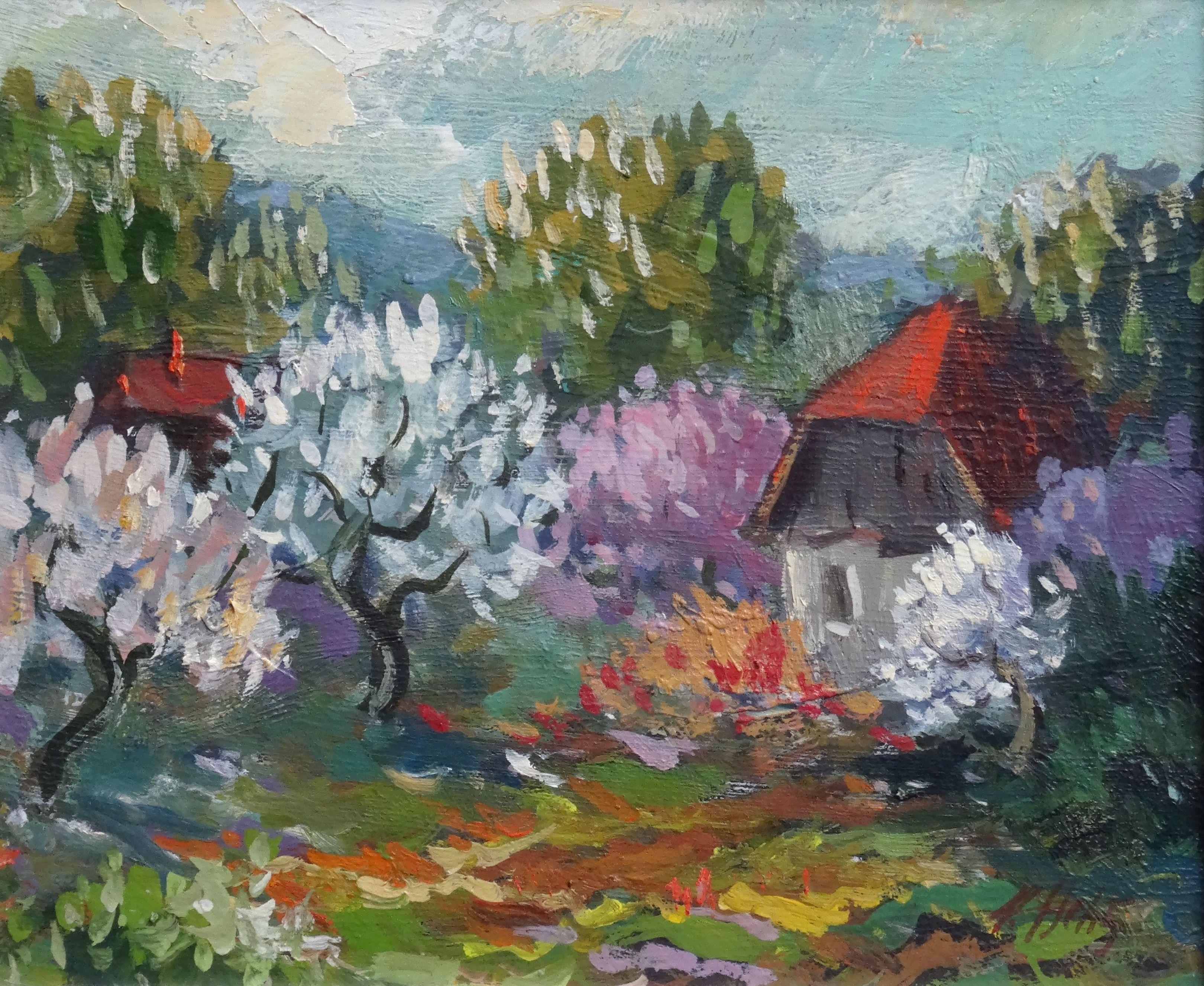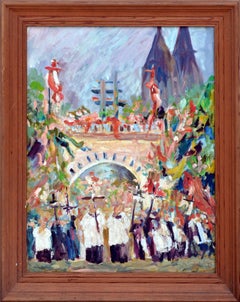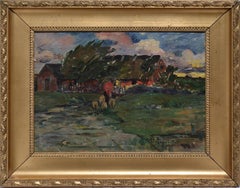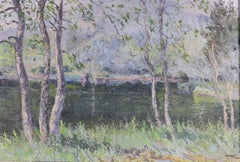
Countryside of France, Original Oil on cardboard, Impressionist style, signed
View Similar Items
1 of 10
Robert HoferCountryside of France, Original Oil on cardboard, Impressionist style, signed1942
1942
About the Item
- Creator:Robert Hofer (1885 - 1954, French)
- Creation Year:1942
- Dimensions:Height: 22.84 in (58 cm)Width: 17.72 in (45 cm)Depth: 1.19 in (3 cm)
- Medium:
- Movement & Style:
- Period:
- Condition:Artwork in good condition, few small losses to the frame (see pictures).
- Gallery Location:PARIS, FR
- Reference Number:1stDibs: LU2502214084132
Authenticity Guarantee
In the unlikely event there’s an issue with an item’s authenticity, contact us within 1 year for a full refund. DetailsMoney-Back Guarantee
If your item is not as described, is damaged in transit, or does not arrive, contact us within 7 days for a full refund. Details24-Hour Cancellation
You have a 24-hour grace period in which to reconsider your purchase, with no questions asked.Vetted Professional Sellers
Our world-class sellers must adhere to strict standards for service and quality, maintaining the integrity of our listings.Price-Match Guarantee
If you find that a seller listed the same item for a lower price elsewhere, we’ll match it.Trusted Global Delivery
Our best-in-class carrier network provides specialized shipping options worldwide, including custom delivery.You May Also Like
The Procession at St. Lauren Holland - Figurative Landscape
Located in Soquel, CA
Figurative landscape painting of the Saint Jans Basilica and the Procession, Laren, Netherlands "Concept (After) Frits Hes (Dutch 1911-1972) of Hilversu...
Category
1980s Impressionist Figurative Paintings
Materials
Oil, Cardboard
Asters. 1979, oil on board, 55x42 cm
Located in Riga, LV
Julijs Vilumainis (1909–1981)
Asters. 1979, oil on board, 54,5x42 cm
Category
1970s Impressionist Landscape Paintings
Materials
Oil, Cardboard
Autumn Landscape in Sunlight - Indian Summer -
Located in Berlin, DE
Frederick Vezin (1859 Torresdale Philadelphia - 1933 Düsseldorf), Autumn Landscape in the Sunlight, oil on canvas, mounted on cardboard, 32 x 41 cm (inside measurement), 44 x 51 cm (frame), signed and dates lower right "F. Vezin. [19]05".
- Cardboard slightly curved, small inconspicuous retouch at the centre of the upper edge of the picture.
About the artwork
Although the painting appears to be a sketch, Frederick Vezin considered it to be a finished work of art, as evidenced by his signature on the lower right. And it is precisely this sketchy quality that leads to an understanding of the painting, which was certainly created in the landscape itself: the natural phenomena were to be depicted artistically at the moment of their observation. This is not done by meticulously sketching nature, but - and here Vezin follows the teaching of French Impressionism - by illustrating nature in its visual fullness. The artist's eye is, as it were, immersed in the visuality of nature, which is made visible by his hand. The painting is therefore not a reflection of the landscape, but its artistic intensification.
This intensification also includes the fact that the foreground of the painting - corresponding to the field of vision - eludes a detail-oriented close-up view. Instead, the spatula-like application of paint, the vertical structure of which corresponds to the structure of the floral growth, has the effect of making nature tangible in its colourful substance.
At the same time, the foreground, which remains indeterminate in its concrete objectivity, creates an atmospheric space that connects with the actual protagonist of the picture, the group of trees, which flares up in shades of red and brown. Here, too, the leaves are more speckled than clearly outlined. It is precisely this 'sketchiness' that opens up a visual experience that makes the landscape accessible in its visual fullness, thus revealing its essence.
In addition to this abundance, the landscape is presented as a structure of order in that the composition of the picture makes the composition of the landscape visible. For example, the group of trees forms a distinct dark green shadow, which is repeated in the shadows cast by the trees behind it. A patterned diagonal axis is created in the picture, which is composed in this way by the landscape itself.
Strictly speaking, this is a cultivated landscape: a fence at the bottom and a low stone wall at the top, running from left to right, are two elements that also have a strong compositional effect. And on the top of the hill, a stone house is embedded in the landscape as the brightest surface in the picture. Nature and culture here form a harmonious synthesis, giving the painting an Arcadian touch.
In order to give the landscape as much space as possible, the horizon line is raised, but the design of the sky is also crucial. The clouds, combined with the shapes of the trees, create a bright blue sky. To the European eye, such a sky is reminiscent of a summer landscape. Accordingly, within the seasonal cycle, the blue sky is reserved for summer, and French Impressionism is also primarily an ode to summer. In Vezin's painting, however, the brilliant blue sky stands above an autumnal landscape, some of the trees even defoliated. It can therefore be assumed that the painting was made not in Europe but in the United States, and that it illustrates the proverbial Indian summer, making Frederick Vezin a pioneer of American landscape painting.
About the artist
Frederick Vezin was the son of a French immigrant to the United States and a German-born mother. This predestined him to promote artistic exchange between the old and new worlds. Having spent part of his schooling in Germany, in 1876, at the age of 20, he enrolled at the Düsseldorf Academy of Art, where he studied with Peter Janssen the Elder, Eduard von Gebhardt and Wilhelm Sohn, among others. He graduated in 1883, settled in Munich and returned to Düsseldorf in 1895, where he lived until his death in 1933.
A native of the United States, he travelled to the country frequently and became a popular portrait and society painter. His artistic talent, however, was most evident in his landscape paintings. Trained in French Impressionism, he developed a virtuoso use of colour and a free brushwork that remained tied to the landscape motif, opening up the landscape itself in a new way. Frederick Vezin turned his attention primarily to the landscape of his homeland, becoming a pioneer of modern American landscape...
Category
Early 1900s Impressionist Landscape Paintings
Materials
Oil, Cardboard
Before Storm Vivid Landscape by Swedish Master 19th century
By Wilhelm von Gegerfelt
Located in Stockholm, SE
Attributed by Wilhelm von Gegerfelt (1844—1920). The disheveled crowns of the trees indicate to us the raging wind, and the evening sky in the background...
Category
Late 19th Century Impressionist Figurative Paintings
Materials
Wood, Oil, Cardboard
Barcelona view urbanscape oil painting Spain spanish
By Josep Marfa Guarro
Located in Barcelona, Barcelona
Josep Marfa Guarro (1928-2014) Barcelona Spain Oil
Oil on canvas glued to cardboard.
Oil measures 23x28 cm. Frameless.
Josep Marfa Guarro (1928-2014)
Josep Marfa Guarro was a Cata...
Category
1990s Impressionist Landscape Paintings
Materials
Canvas, Oil, Cardboard
$325 Sale Price
43% Off
Shady Stream - Late 19th Century Bucolic Landscape
Located in Soquel, CA
Gorgeous late 19th Century Russian landscape with stream in the shade by Nikolai Aleksandrovich Sergeev (Nikolai Alexandrovich Sergeyev ...
Category
1890s Impressionist Landscape Paintings
Materials
Linen, Oil, Cardboard
$13,200 Sale Price
20% Off
